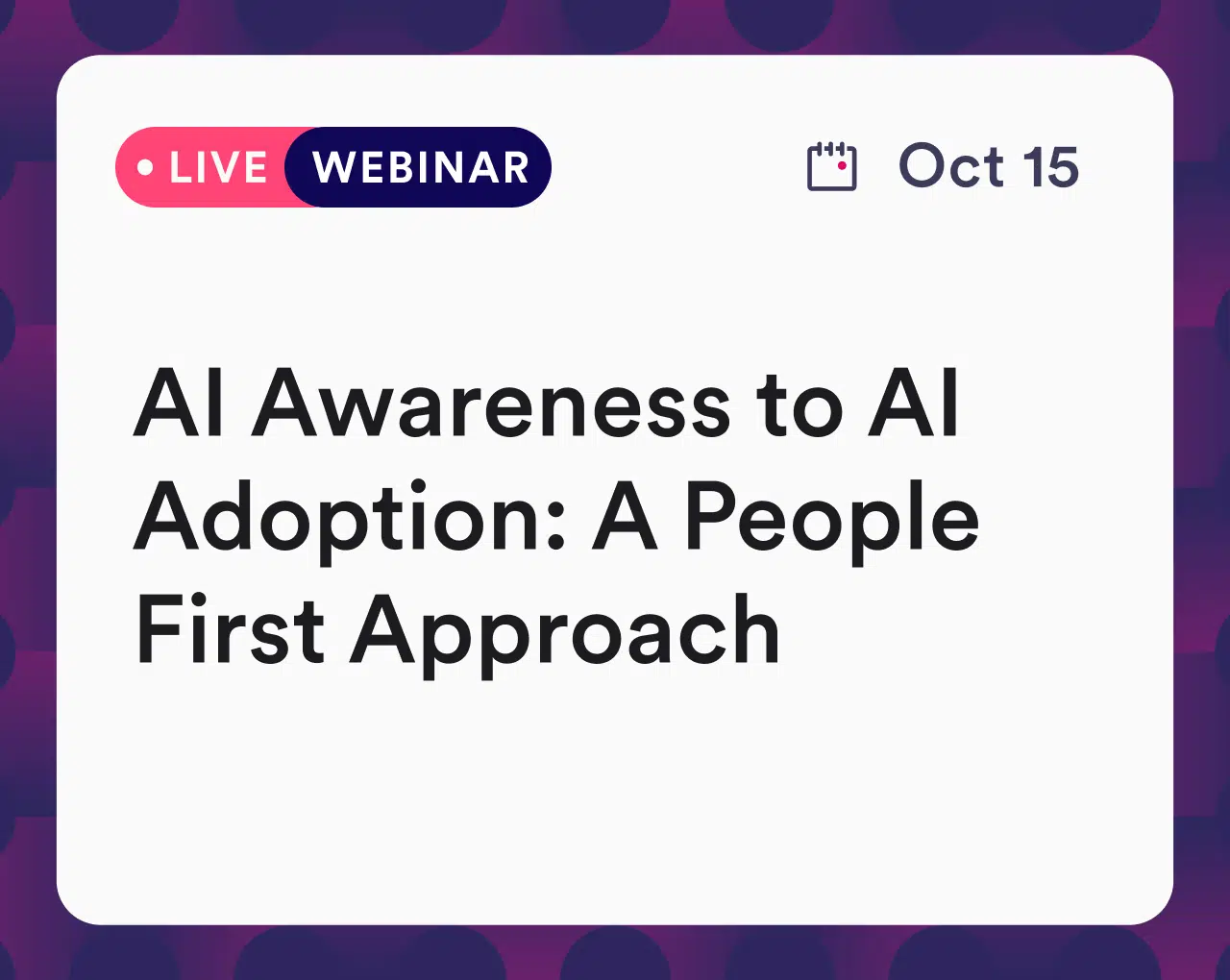What is Employee Engagement?
The definition of employee engagement refers to the emotional and psychological investment that employees have in their work and the organization they work for. It measures how involved, motivated, and committed employees are to their work and to the organization’s success.
Employee engagement encompasses several aspects of the employment experience, including job satisfaction, organizational culture, leadership, and opportunities for growth and development. High levels of engagement are associated with higher levels of job satisfaction, lower turnover rates, and improved performance. In contrast, low levels of engagement can lead to decreased productivity and increased absenteeism.
Why is Employee Engagement Important?
Workers’ everyday actions and decisions affect the organization’s goals. Therefore, employee engagement unlocks a high-performing workforce. Organizations that value employee engagement are more likely to create a supportive and inclusive work environment where employees feel valued, empowered, and motivated to perform at their best. This can lead to improved organizational performance, increased profitability, and a more substantial reputation in the community. Organizations with engaged workers have 6% higher net profit margins. And over five years, they have five times higher shareholder returns.
Employee engagement is essential for several reasons:
- Improved Performance: Engaged employees are more motivated, productive, and committed to their work, leading to improved performance and higher-quality work.
- Increased Job Satisfaction: Engaged employees are more satisfied with their jobs and less likely to leave the organization, which can help reduce the cost and time required for recruiting and training new employees.
- Better Organizational Culture: A culture of engagement can help to create a positive, inclusive, and supportive work environment, where employees feel valued and are more likely to work together effectively as a team.
- Enhanced Reputation: Companies with a reputation for engaging their employees are more likely to attract and retain talented employees, and can also benefit from a positive image in the eyes of customers, suppliers, and other stakeholders.
- Increased Profitability: Companies with higher levels of engagement are more likely to have improved organizational performance and increased profitability.
In summary, employee engagement is important because it can lead to numerous benefits for both employees and the organization, including improved performance, increased job satisfaction, better organizational culture, enhanced reputation, and increased profitability. But, a lack of engagement can cost entities money. For example, low concentration can cause expensive absenteeism and turnover. Likewise, poor engagement can result in safety incidents and theft.
3 Models of Employee Engagement
Organizations take different approaches to match their values and processes. Three models are popular strategies.
1. The Zinger Model
The Zinger Model builds engagement by focusing on employees’ core needs. The model follows pyramid-shaped building blocks, with management starting at the bottom row and moving up.
The bottom row is the employees’ necessities to do good work. These building blocks include:
- Enhancing employees’ well-being
- Enlivening workplace energy
- Creating meaning in workers’ roles
- Leveraging strengths of individuals’ capabilities.
The second to bottom row connects workers to the organization. The building blocks are vital actions that unite the company by:
- Building relationships and encouraging team-building.
- Fostering recognition.
- Mastering moments that keep workers present.
The second to top row boosts performance. The building blocks are practical ways to reach results, including:
- Maximizing performance by eliminating blockers to success
- Tracking progress to increase focus and create a sense of movement.
The top row of the pyramid is achieving results. Employee engagement is one goal ultimately, organizations want to enhance profitability and productivity.
2. The Deloitte Model
The Deloitte Model engages employees by creating an appealing workplace. Under this model, employees are challenged, involved, and respected. The five core elements of the Deloitte Model include the following:
- Meaningful work – Contributing elements include prioritized hires and empowered teams. Employees also thrive when they have autonomy and time to rest.
- Hands-on management – Supervisors should set clear and transparent goals. Organizations that invest in manager development have leaders that increase performance. For instance, coaching individuals and teams improves engagement and long-term productivity.
- Positive work environment – Whether physical or virtual, workers’ environment plays a huge role in their engagement. Organizations can use company values to engage remote teams, such as with recognition.
- Growth opportunity – On-the-job training and support help workers to succeed. A high-impact learning culture builds their knowledge and engagement. Learning resources also advance career mobility.
- Trust in leadership – Management sets the organization’s tone. They convey the company’s mission and purpose. Supervisors must inspire their direct reports.
Organizations that use this model construct an irresistible workplace.
3. The Aon Hewitt Model
The Aon Hewitt Model connects employee engagement to business outcomes. Organizations can use this model to determine the employees’ engagement levels. It breaks the workers’ experience into the following drivers:
- Brand – The organization’s brand reputation drives employees’ (and customers’) loyalty.
- Leadership – Employees need to trust their managers. They play a massive part in the workers’ daily experience.
- Performance – Companies that recognize workers’ performance cultivate higher engagement. Workers want to have opportunities to advance their careers. And rewards foster this belief.
- Company Practices – Organizations’ support and processes are engagement drivers. Good communication, inclusion efforts, and tools provide opportunities.
- The Basics – Employee engagement hinges on employers meeting their necessities. Workers need job security and to feel safe in the workplace. Competitive compensation and an excellent work-life balance are also essentials.
- The Work – Mental stimulation encourages autonomy and collaboration. Workers must feel driven by their work.
The Aon Hewitt Model uses the short phrase, “say, stay, and strive.” Engaged employees say positive things about their organizations. They want to stay with the company. And workers strive to do their best work when inspired.
7 Examples of Employee Engagement Initiatives
Examples of employee engagement initiatives that organizations can implement include:
- Employee Recognition Programs: Programs that recognize and reward employees for their contributions and achievements can help to increase engagement and motivation.
- Opportunities for Professional Development: Providing employees with opportunities to develop new skills and advance their careers can help to increase employee engagement and motivation.
- Employee Wellness Programs: Programs that focus on employee physical and mental health can help to increase engagement and reduce stress and absenteeism.
- Employee Voice and Feedback: Encouraging employees to provide feedback and have a voice in decisions that impact their work can help to increase and improve organizational performance.
- Flexible Work Arrangements: Providing employees with flexible work arrangements, such as telecommuting or flexible schedules, can help to increase work-life balance.
- Social and Community Engagement: Encouraging employees to engage in social and community activities can help to increase engagement and improve organizational culture.
- Employee Assistance Programs: Providing employees with access to support and resources for personal and professional issues can help to increase engagement and reduce stress and absenteeism.
These are just a few examples of employee engagement initiatives that organizations can implement to support and engage their employees. The specific initiatives that work best will depend on the needs and culture of the organization and its employees.
What are Employee Engagement Metrics?
There are several metrics that L&D and HR teams at large companies can use to measure employee engagement. Some of the most commonly used employee engagement metrics include:
- Employee Satisfaction Surveys: This is a popular and straightforward way to measure employee engagement, where employees are asked to rate their level of satisfaction with various aspects of their work and the organization.
- Turnover Rates: High turnover rates can indicate low levels of engagement and dissatisfaction with the job or work environment.
- Absenteeism Rates: High absenteeism rates can indicate low levels of employee engagement and a lack of motivation to come to work.
- Net Promoter Score (NPS): This is a measure of employee loyalty and willingness to recommend their employer to others. A high NPS can indicate high levels of employee engagement and satisfaction.
- Employee Engagement Index: This is a composite metric that combines multiple engagement metrics, such as job satisfaction, organizational culture, and leadership, to provide a more comprehensive view of engagement.
- Employee Retention Rates: High retention rates can indicate high levels of engagement and satisfaction with the job and work environment.
- Feedback from Performance Evaluations: Feedback from performance evaluations can provide insight into employee engagement and satisfaction with their job and the organization.
Yet, organizations may need more than these metrics. Many factors affect employee engagement. The following can influence workers’ emotions and behaviors:
- Feelings about the organization or employer
- The quality of the organization’s products and services
- Their daily tasks and interactions
- Relationships with supervisors and coworkers
- The trajectory of their career
Employee engagement metrics are not one size fits all
Employee engagement metrics are not one size fits all. Instead, managers and representatives should focus on strategies that match the organization. In summary, these are some of the metrics that L&D and HR teams at large companies can use to measure engagement, and organizations can use a combination of these metrics to get a comprehensive view of employee engagement.
Managers can also have conversations with employees. Training tips help managers lead effective one-on-one meetings. But if the manager is the problem, the worker may not respond candidly.
Businesses need to determine the following:
- Engagement outcomes: Outcomes identify areas to maintain or improve. For instance, a survey answer is an outcome.
- Engagement drivers: Drivers are factors that employees consider important. For example, engagement increases with career development services, recognition, and competitive pay.
- How to do a driver analysis: An analysis identifies which engagement drivers have the greatest impact. Some drivers may influence engagement better than others.
- An ongoing strategy: Organizations should measure engagement often enough to note behavior and preference changes.
Organizations should measure engagement across the entire workforce. The results can benchmark outcomes from the team and individual surveys. Annual surveys are better than less frequent measurements. Likewise, gauging tactics more regularly helps organizations establish trends.












